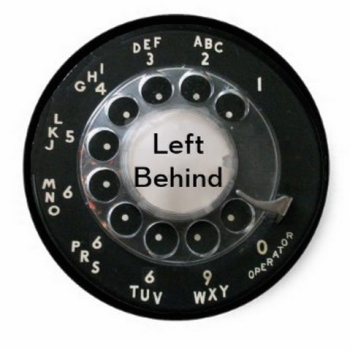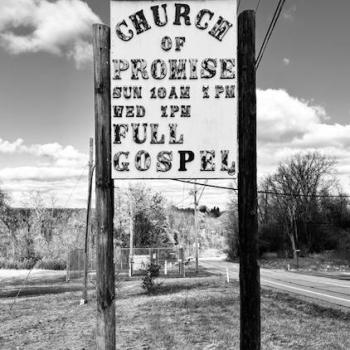
Growing up in what could best be described as a decidedly non-ecumenical Protestant denomination, I was taught to treat “interfaith” like a bad word.
But the negativity around interactions between people of different religious, spiritual and humanistic beliefs always sat a bit awkwardly with my everyday experience growing up in Los Angeles, one of the most religiously diverse cities in the United States.
I couldn’t square the alarming discourse around interreligious interactions with the lived reality of diversity that defined my teenage years (and beyond). My friends were Buddhist and Muslim, Jewish and Christian, Pagan and atheist.
And so, despite the warnings, I stayed curious about different traditions, learning about other religions as I dove deeper into my own.
As I’ve made religion my profession, I’ve also come to appreciate how interreligious dialogue has changed over the years and how it is far from the caricature I was brought up to believe it was.
Interfaith dialogue often gets a bad rap as a project concerned with surface level “feel good” conversations. Today, interreligious dialogue (a more widely preferred term) has grown into a multifaceted and critical field of interaction with real-world impact and implications for your life and mine.
The birth of interfaith dialogue.
In 1893, religious leaders from around the world met in Chicago alongside the World’s Fair. Though there were antecedents in various traditions, this convening — known as the World’s Parliament of Religions — is widely recognized as the birthplace of the modern interfaith movement. “Its goal was to bring together world religious leaders on common ground” and there was much talk about the shared “Spirit of Religion” between them. In August 2023, the Parliament returns to Chicago to celebrate its 130th anniversary.
Though largely dictated by white Christian terminology and themes, as well as lacking representation for Black and Indigenous groups, the Parliament sparked the initial growth of interreligious dialogue and ecumenism as Christians wrestled with their “relationship to the rest of the world in the heyday of Western colonialism.”
Over the intervening years, interreligious dialogue and encounters have evolved, inviting a wider range of actors and involving a more capacious scope of understanding and practical applications.
No longer is interfaith interaction geared toward finding agreement or manufacturing assent. Neither is it only concerned with matters of the heart, soul and mind.
Instead, interreligious dialogue involves the discovery of both similarities and distinctives, agreement and differences of opinion.
The key is the conversation, an ongoing and “mutual consultation” in pursuit of understanding different points of view and practices. This is not achieved through superficial tolerance or debate, but “through active and compassionate listening.”
This process is not about erasing differences to find common ground but developing mutual respect in order to build sustainable relationships.
So that all may flourish.
Often, these relationships are organized around common goals and in pursuit of broader social, political or humanitarian impact. Interreligious groups at the global, regional, national and local level address issues related to hunger and healthcare, education and the environment, gender equity and cultural empowerment, conflict and peacemaking.
For example, representatives of different world religions met in Kyōto, Japan in October 1970 in order to address issues related to war and nuclear proliferation. This led to the founding of Religions for Peace International, who have gone on to meet in the Netherlands, the United States, Kenya, Australia, Italy, Jordan, Austria, and Germany to address conflicts and critical issues in places as diverse as Kosovo and the Democratic Republic of Congo, South Africa and Syria, Bosnia and Burundi.
In the 1990s, Religions for Peace played a key role in bringing together Roman Catholic, Serbian Orthodox, Muslim and Jewish groups for peace mediations, which led to the establishment of the Inter-religious Council of Bosnia and Herzegovina (IRC-BiH).
The problem with interfaith dialogue.
Interreligious dialogue has multiple critics, from those who question its effectiveness to those who warn against its inherent biases and elitism. Scholars like Muthuraj Swamy warn how conflicts often labeled “religious are mostly based on social, political, linguistic, or cultural factors, and that the practitioners of different religions do not actually come into conflict at the grassroots level.” These are all warranted and valid critiques.
But, I remain convinced that if we want to understand our world and how values and the complexities of the human condition inform behavior in changing circumstances, we must not only pay attention to the role religious actors and institutions play but pursue interreligious dialogue as a critical practice and crucial part of policy-making processes.
In Lindau, Germany in 2019 and 2021, I had the opportunity to take part in Religions for Peace convenings, as a moderator, writer and researcher. I witnessed how representatives of Islam and Judaism, First Nations of Canada and Shinto, humanism and Hinduism discussed how they might together address some of the world’s most pressing issues.
Not only do such convenings and conversations allow us to better appreciate the diversity of the human condition, it might also improve the possibility of addressing some of humanity’s urgent shared challenges.
Although the foundations of modern religion are shifting and spirituality as we have long defined it is undergoing daily transformations, neither shows any signs of going away. Religion and spirituality will remain tenaciously important, continuing to impact human societies for the foreseeable future, playing a role in the world’s most intractable problems — both for good and for ill.
Interreligious dialogue matters.
As Azza Karam, former Secretary General of Religions for Peace International likes to say, “we should not be talking about whether religions matter, but how they matter.”
That is why, as delegates meet in Chicago in August, it is important we take note.
Their critical dialogue and comparative conversations will not only add another chapter to the annals of high-level interfaith interaction, but impact societal conventions and statecraft, socio-economic conditions and the spiritual inclinations of generations to come.
Whether or not you are a fan of interreligious dialogue, it will shape the way our world works.
In short, and to riff off Karam’s wise words above, interreligious dialogue matters. And as students of religion, it’s vital we understand how it matters.
8/8/2023 8:15:08 PM





